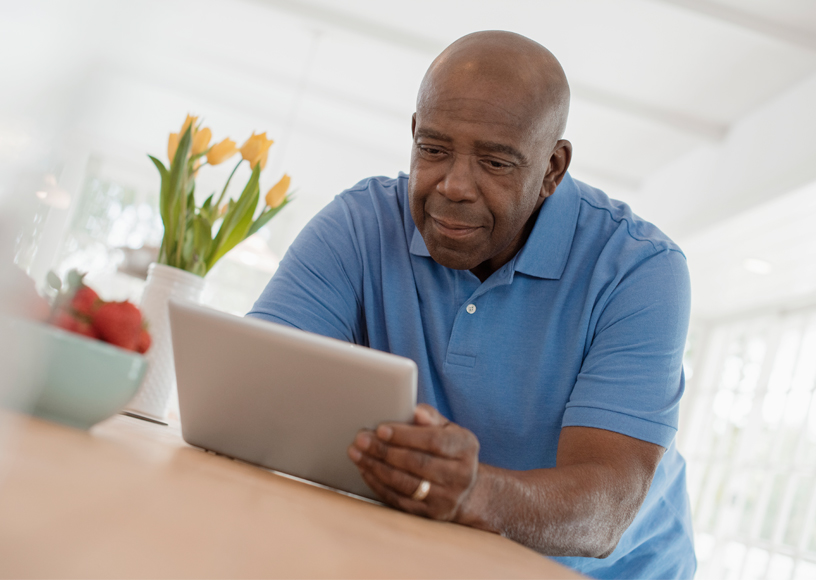6 signs of a possible panic attack and how to help manage it

Feeling a sense of panic can be normal in certain situations, especially after something traumatic, such as a car accident. It’s a common response to fear, explains Kevin Chapman, Ph.D., licensed psychologist and director of the Kentucky Center for Anxiety & Related Disorders in Louisville.
A panic attack is different though. Yes, it’s a sudden rush of intense fear, explains Chapman. But it usually comes without warning or any real reason.1
Fortunately, there are many ways to treat panic attacks and panic disorder. The goal is to have fewer attacks and learn ways to manage them. Recognizing what’s going on is the first step.
Read on to learn the signs and symptoms of a panic attack. Then find out what to do if you have one.
Signs of a panic attack
The human body was designed to react in a certain way to dangerous situations. People go into flight, fight or freeze mode.
During a panic attack, the body responds the same way — except there may be no real danger or threat, explains Chapman. Here are 6 common things that can happen during a panic attack.
Increased heart rate and breathing1
People often describe a panic attack to feeling like they are going to pass out, explains Chapman. The heart may feel as if it’s beating very hard or racing.
“If someone feels as if they’re losing control during a panic attack, they might start holding their chest and changing their breathing,” says Chapman. It might even look or feel as though they are having a heart attack, he adds. During a panic attack, though, those chest pains come from anxiety instead of a damaged heart.
Surroundings feel like they’re spinning1
When the body reacts to stress, blood and oxygen rush to the large muscles in the legs, leaving less available for other parts of the body. This reaction developed to allow people to run away from danger. “This is why you might feel lightheaded or feel tingling sensations in your hands during a panic attack,” Chapman says.
Sweating1
Feeling lightheaded may cause the body to perspire, explains Chapman. Believe it or not, this served a purpose for our ancestors. Sweating makes the skin slick, so if someone was caught — by a person or an animal — they’d be able to slip away, Chapman explains.
Nausea1
During a panic attack, blood flows away from the digestive system. That can bring on queasy feelings or even vomiting.
Others may not notice
A panic attack doesn’t have to be obvious to others. “We’ve had many patients who will say, ‘I’m having a panic attack right now.’ And when I look at them, I can’t tell at all,” says Chapman. But just because other people don’t notice doesn’t mean a panic attack isn’t real.
Exhaustion
Panic attacks typically last about 10 minutes, explains Chapman.2 During that time, the body is flooded with the stress hormone cortisol. When the panic attack is over, cortisol leaves the system. This experience can make people so tired they need to rest, Chapman shares.
How to treat panic attacks
If you’re experiencing panic attacks, it’s important to speak to a health care provider. That way, they can ensure that there’s no other condition causing the symptoms, such as a thyroid disorder.
If it turns out there is no physical issue, your provider may make a referral to a mental health professional. That provider can help you come up with a plan to manage panic attacks, both in the moment and over the long term.
4 skills to help manage a panic attack
A therapist can teach certain skills that may help shorten or manage the intense feelings that happen during a panic attack. These techniques usually involve breathing, grounding and ways to calm yourself (or someone else) during the attack. A few to try:2,3
- Slow down breathing. Take a deep breath through the nose and hold it for a count of 2. Then exhale through the mouth.
- Use all 5 senses to list things in the room or space. For instance, identify 5 things you can see, 4 things you can hear, 3 things you can touch, 2 you can smell and 1 you can taste.
- Talk yourself through it. Say things like, “This too shall pass” or “I can ride this wave,” suggests Chapman.
- Put an ice cube on your wrists or face for a brief moment.
Long-term treatments for panic attacks and panic disorder
Cognitive behavioral therapy can help teach you how to react to feelings of fear, so that panic doesn’t take over. Exposure therapy is a form of CBT where people confront the fears that make them panic. That may mean putting yourself into situations you’ve been avoiding. It can also include triggering feelings of panic on purpose to learn how to deal with them. 4
Medication can help too, usually in combination with therapy. Some of the medications that may be used include antidepressants, which help treat anxiety and panic. A provider may also prescribe beta-blockers to control symptoms such as sweating and a racing heart.4
Panic attacks can be overwhelming. But with the right help, they are something you can overcome.
